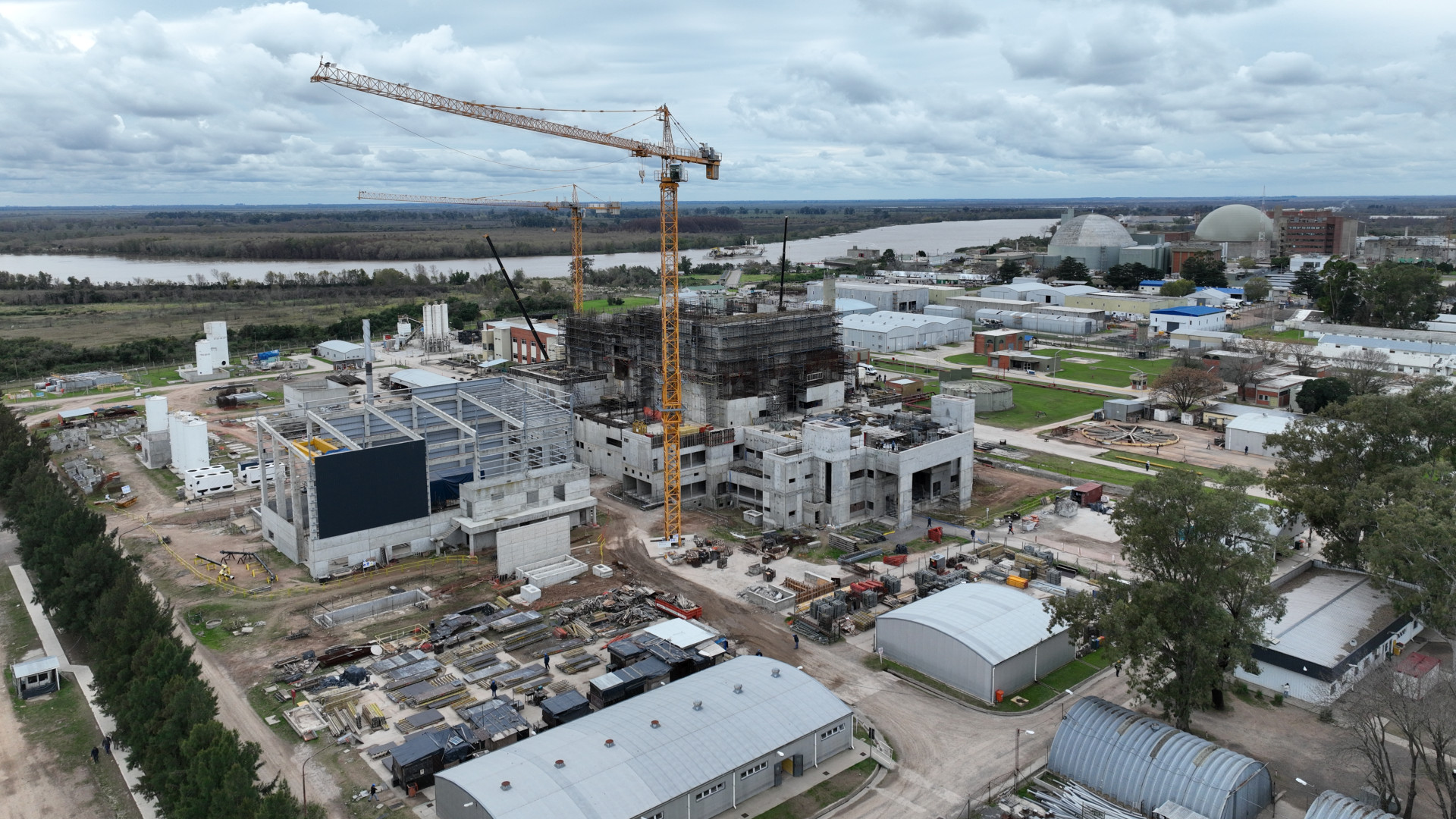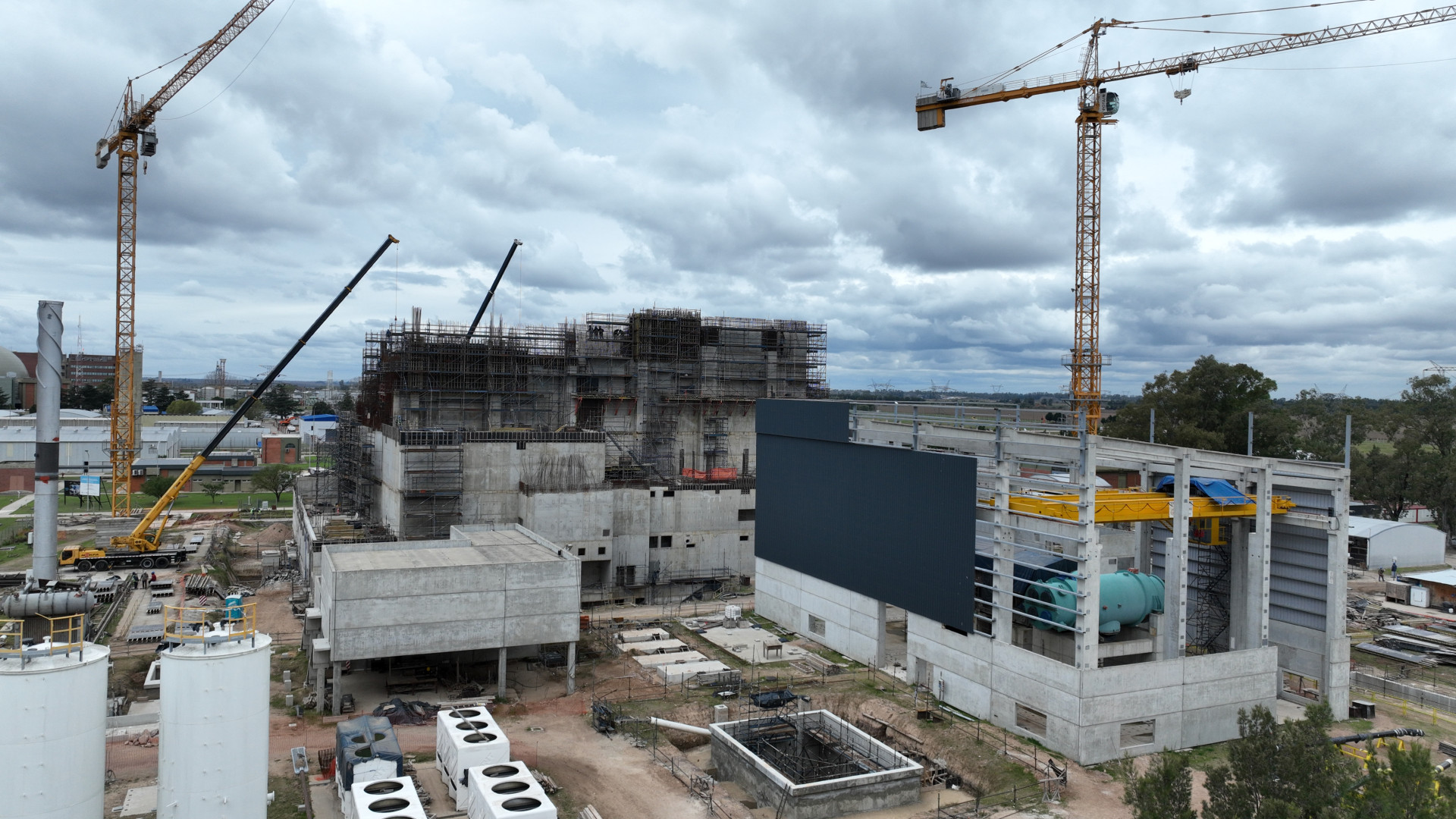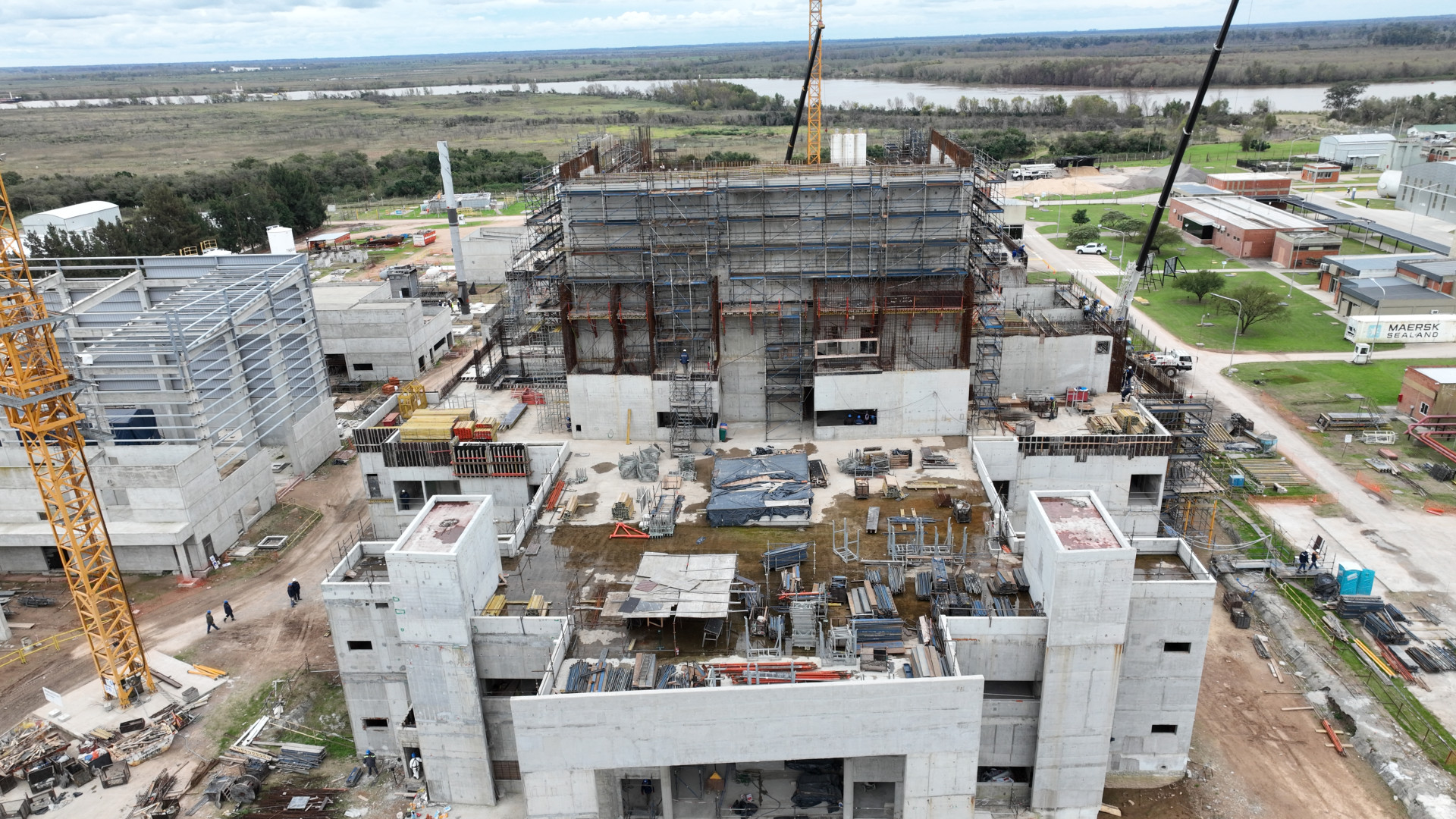Table of content
- Introduction
- Key features
- Demonstration plant
- Main uses and benefits
- A window of opportunity
- Argentinian industry development
- Photo gallery
The global nuclear industry promotes the use of fission technology as one of the few sources of carbon-free base load power generation. In other words, it is capable of ensuring electrical supply through massive volumes of energy generated permanently and without emitting greenhouse gases. This technology thus reinforces its role as the most efficient source for mitigating the global warming process that has been degrading the atmosphere and the environment for decades.
In this context, in recent years, a new type of nuclear power plant has emerged worldwide, known as Small Modular Reactors or SMRs.
This concept encompasses the design and development of nuclear power plants of smaller size and electrical power output than traditional ones. They feature simplified designs, optimized safety schemes, shorter construction times, and lower, more efficient investment costs.
Furthermore, the relative simplicity of the design of these reactors offers a range of benefits, including optimized manufacturing methods, versatility for installation in remote or off-grid locations, and flexibility to adapt to various uses, both electrical and non-electrical.
Among nearly a hundred SMR designs currently existing internationally, the Argentinean plant CAREM stands out as one of the few that is actually under construction, positioning the country as one of the leading developers and, consequently, as a global leader in this class of technology.
Introduction
CAREM, the first power plant with a 100% national design, establishes itself as a benchmark project for this new generation of reactors designed for electricity production at low to medium power levels. Additionally, it is an innovative variant of the so-called Pressurized Water Reactors (PWR).
PWRs represent three-quarters of the over 400 power reactors in operation worldwide. Moreover, they possess a set of distinctive characteristics that allow for relatively simpler and more efficient planning of construction, operation, and maintenance processes compared to other types of power plants.
CNEA is strongly committed to constructing the first version of the CAREM plant, which, like any 'first of a kind' development (FOAK), will undergo a validation and qualification process crucial for scaling up to larger and more powerful commercial versions after its commissioning.
In this regard, progress is being made with the commissioning of the first CAREM reactor, which will generate 32 megawatts of electricity (enough to supply approximately 120,000 inhabitants). This reactor not only serves as an engineering reference for larger modules currently in the conceptual design stage but also facilitates the licensing process for future commercial-scale CAREM reactors.
CAREM: Key features
SMRs like CAREM benefit from more efficient construction timelines and investment costs due to their size and simplified design. Additionally, their modular nature allows for standardization of manufacturing processes for their main components, enabling them to be fabricated in factories and transported to the site for final assembly.
At the same time, this characteristic provides the opportunity to plan for the future incorporation of new modules to increase the electrical power output of the installation, allowing for more efficient and flexible financing of the required investment.
Demonstration plant
While engineering, administrative and support working groups are distributed among the main headquarters of CNEA (Central Headquarters and the Atomic Centers of Bariloche, Constituyentes, and Ezeiza), the physical location of the first CAREM plant constructed by CNEA is situated on a site near Lima, in the Zárate district, Buenos Aires province. This site is part of the "Atucha Nuclear Complex," where the Atucha I and Atucha II plants are already in operation.
The site was renovated both structurally and environmentally to become the location for the first CAREM plant, as well as a potential atomic center featuring laboratories, training classrooms, and a nuclear power plant operator training simulator, among other activities. These developments will create an environment conducive to the future construction of commercial-type CAREM plants, the training of the next generations of nuclear professionals, and continued support for the economic and social growth of Lima, Zárate, and other cities in the region and their surrounding areas.
The building that will house the reactor, also the first designed in Argentina for this purpose, covers an area of 18,500 square meters, with approximately 14,000 square meters allocated to the so-called 'nuclear module' (the sector containing the reactor containment, control room, and all safety and operational systems of the plant). The construction progress currently exceeds 85%.
Main uses and benefits
The primary virtue of this type of technology is generating electrical energy without emitting carbon dioxide or other greenhouse gases, which becomes crucial in the urgent challenge countries face to decarbonize their energy matrix.
Therefore, CAREM-type reactors are an ideal complement to renewable energy sources, allowing for the creation of hybrid systems that combine the reliability and consistency of a base source like nuclear power with the versatility of sources like solar or wind, which contribute a significant volume of energy to the system intermittently due to their dependence on favorable weather conditions.
On the other hand, the potential of these types of plants for supplying electricity to remote areas away from major urban centers is highlighted, allowing for the design of decentralized electrical grids with regional scope, potentially independent of the national interconnected system.
Moreover, they are presented as ideal generation sources for industrial hubs with high energy consumption (thus separating industrial consumption from domestic consumption) or for powering seawater desalination plants (facilities that require high and constant electricity consumption).
Additionally, SMRs provide other non-electrical applications such as utilizing residual steam for various industrial purposes or for supplying urban heating networks.
A window of opportunity
Energy obtained through the burning of coal and gas (primarily) and oil (to a lesser extent) results in the release of greenhouse gases such as carbon dioxide (CO2). These gases trap heat in the atmosphere, leading to an increase in global temperatures that impact ecosystems and the environment in general.
The growing demand for the use of so-called "fossil fuels" for energy generation and their environmental impact have gained prominence on the international agenda. A milestone in this regard was the 28th Conference of the Parties to the United Nations Framework Convention on Climate Change (2023), where over 110 countries committed to advancing policies for decarbonizing their energy matrices.
The need to decarbonize energy matrices in an increasingly populated and electricity-dependent world makes the contribution of base load sources fundamental. These are sources capable of generating energy continuously, independent of weather conditions, and without releasing carbon dioxide during this process.
In this scenario, nuclear power once again emerges as a clean and secure alternative for base load electricity generation on a global scale, especially with the rise of small and medium-sized modular reactors.
With CAREM, Argentina reaffirms its leading role in the international nuclear market, a result of over seven decades of nuclear technology development for peaceful purposes. Throughout these years, the country has established itself as a designer and exporter of nuclear reactors dedicated to research and radioisotope production, as a trainer of highly specialized human resources, and as an expert in manufacturing fuels and other qualified components for research reactors and power plants, among other aspects inherent to this industry.
Thus, after initiating its nuclear experience with the establishment of CNEA in 1950, Argentina has successfully launched the first reactor in Latin America (RA-1, in 1958), as well as the first nuclear power plant on the entire continent (Atucha I Nuclear Power Plant, in 1974). Additionally, Argentina has exported research reactors to Peru, Algeria, Egypt, Australia, and the Netherlands.
A distinctive factor of Argentina in its role as a designer/vendor of nuclear reactors, adding another component of competitiveness to the virtues of CAREM, is that historically the country does not limit itself to selling turnkey reactors. Instead, it accompanies the buyer in human resources training, access to knowledge, and technological advice throughout the reactor's lifecycle.
Argentinian industry development
Among the objectives associated with the design, construction, and commissioning of the first CAREM plant, one of the most prominent is that at least 70% of its inputs, components, and related services are provided by Argentine companies, qualified under the international safety standards governing the nuclear industry (permanently supervised by CNEA).
Therefore, the CAREM Project also serves as a catalyst for the industry and cutting-edge technology in our country, seeking to consolidate a local supply chain capable of participating in the future export of this type of power plants.


